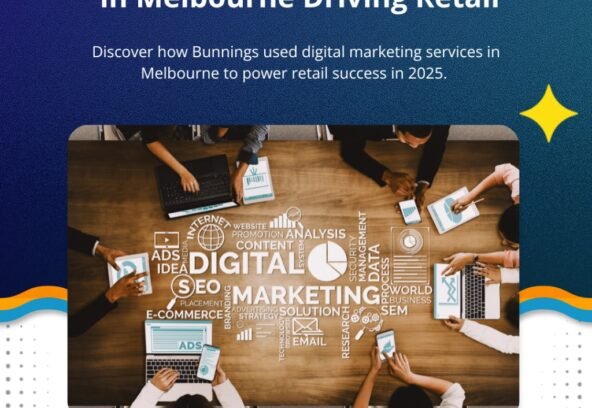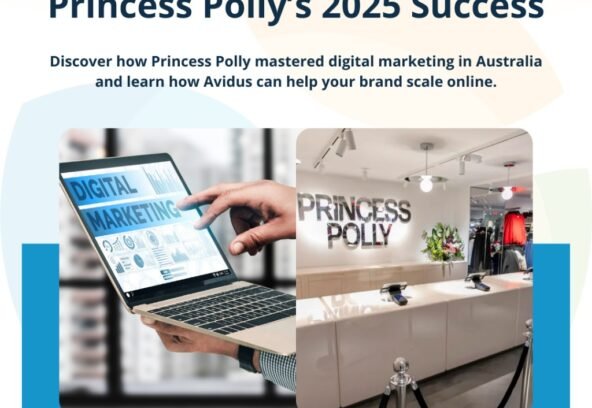Australia’s retail sector has always been competitive, but in 2025 it is more digitally driven than ever. Shoppers now expect seamless experiences that combine both in-store convenience and online accessibility. For iconic brands like Bunnings, thriving in this environment has required more than just strong product ranges. It has demanded a forward-thinking approach to digital marketing.
This case study explores how Bunnings, one of Australia’s most recognisable retail giants, embraced digital marketing services in Melbourne to enhance engagement, drive conversions, and stay ahead of evolving consumer expectations. More importantly, it shows how other Australian businesses can replicate this strategy with the right support.
Understanding the Digital Shift in Retail
Traditional retail models — catalogues, foot traffic, and in-store promotions — are no longer enough to sustain growth. Today’s Australian consumers:
- Start their shopping journey online
- Expect personalised recommendations
- Rely on reviews and peer content
- Prefer a frictionless omnichannel experience
Bunnings recognised this shift early and made digital transformation a central pillar of its 2025 growth strategy. By doing so, it not only stayed relevant but also became a benchmark for digital-first retail innovation.
Key Digital Marketing Strategies Bunnings Adopted
1. Search Engine Optimisation (SEO) with a Local Focus
Bunnings understood that search is where most customer journeys begin. Their SEO strategy in 2025 focused heavily on local search visibility:
- Optimising store pages with location-specific keywords like “hardware store Melbourne” and “tools near me”
- Creating dedicated landing pages for each major city
- Publishing how-to articles, project guides, and buyer tips around high-intent keywords
The result? Higher organic traffic, stronger local visibility, and reduced reliance on expensive awareness campaigns.
2. Personalised Email Marketing
In 2025, email marketing remains one of the most cost-effective channels for Australian retailers — but only when done right.
Bunnings moved away from generic email blasts and instead focused on segmentation and personalisation:
- DIYers received weekend project tips
- Tradies got exclusive offers and product updates
- Garden lovers were sent seasonal planting guides
Dynamic content blocks made emails visually engaging, while behaviour-based triggers increased open rates and conversions.
3. Social Media Engagement & Influencer Partnerships
Bunnings shifted from product-led social media posts to value-driven content that resonated with audiences:
- Instagram Reels showcasing quick DIY hacks
- YouTube tutorials featuring local creators
- Facebook Groups moderated by Bunnings experts to foster community discussions
They also collaborated with micro-influencers — local builders, stylists, and garden bloggers — who brought authenticity and relatability.
This created an ecosystem where Bunnings was not just a retailer but a trusted advisor and partner in projects.
4. Paid Advertising & Retargeting
Paid media campaigns were redesigned for conversion-focused performance:
- Google Search Ads targeted high-intent queries like “buy garden tools Melbourne”
- Meta ads targeted homeowners in metro suburbs
- Retargeting ads reminded shoppers of items browsed but not purchased
By aligning budget with ROI, Bunnings turned digital ads into a powerful revenue driver rather than just a brand awareness tool.
5. User-Generated Content & Reviews
Trust is currency in digital retail. Bunnings amplified social proof by:
- Encouraging customers to upload project photos using Bunnings products
- Featuring video testimonials and customer stories on product pages
- Displaying review stars prominently in ads and Google snippets
This boosted authenticity, improved click-through rates, and helped hesitant buyers make confident decisions.
6. Mobile Optimisation & App Integration
With mobile accounting for over 60% of retail traffic in Australia, Bunnings prioritised a mobile-first experience:
- Fast-loading, responsive webpages
- A feature-rich app offering barcode scanning, stock updates, and easy online ordering
- Push notifications for click-and-collect, seasonal sales, and new launches
The app became an essential bridge between in-store and online experiences, ensuring shoppers could engage with the brand anytime, anywhere.
7. Video Content & Virtual Workshops
Bunnings took its reputation for in-store workshops and extended it online. In 2025, they hosted virtual DIY sessions on platforms like YouTube and Facebook Live, covering:
- Beginner woodworking projects
- Outdoor entertainment setups
- Seasonal garden care
These workshops were later repurposed into short-form TikTok and Instagram content, helping the brand dominate visual-first platforms.
8. Interactive Web Experiences
To make its website more engaging, Bunnings added interactive tools and resources:
- DIY calculators for paint, mulch, and flooring
- Augmented Reality (AR) tools to visualise furniture in homes
- Clickable project guides with integrated shopping lists
These experiences increased time-on-site, average order values, and customer satisfaction.
9. Content Marketing for SEO & Authority
Bunnings became a content leader by investing in blogs, guides, and video tutorials. Their content library included:
- Seasonal DIY project ideas
- Maintenance checklists for home upkeep
- Buyer’s guides and product reviews
Optimised for SEO, this content answered real customer questions and built long-term trust and authority.
10. Analytics & Conversion Optimisation
Every digital campaign was backed by data. Bunnings implemented:
- A/B testing for subject lines, creatives, and landing pages
- Heatmap tracking to optimise product page layouts
- GA4 dashboards for real-time ROI measurement
This data-first approach allowed constant refinement and continuous improvement.
Results of Bunnings’ 2025 Digital Strategy
By 2025, Bunnings achieved:
- 📈 Significant growth in online visibility and traffic
- 👥 Stronger customer engagement through personalised campaigns
- 🛒 Increased conversions and average cart size
- 📲 High adoption of its mobile app, boosting omnichannel shopping
- 🌱 Strengthened brand trust and community positioning
In short, Bunnings evolved from being just a hardware retailer to a digital-first lifestyle brand.
How Avidus Helps with Digital Marketing Services in Melbourne
Just like Bunnings, your brand can achieve lasting success by leveraging smart, data-backed digital strategies. At Avidus Interactive, we specialise in helping Australian businesses thrive with tailored digital marketing services in Melbourne.
What We Offer
- SEO & Local Search Optimisation: dominate Google rankings in your city and beyond
- Email Automation: personalised, behaviour-based campaigns that drive loyalty
- Paid Advertising: PPC, social, and retargeting campaigns optimised for ROI
- Content & Social Media Marketing: videos, blogs, carousels, and reels designed to convert
- App & Website Development: seamless, mobile-first digital experiences
- Analytics & Reporting: real-time dashboards to track, refine, and scale campaigns
We also help brands explore emerging technologies like AR, 3D modelling, and immersive shopping experiences to stay future-ready.
Conclusion
Bunnings’ 2025 journey shows that retail success is no longer just about shelves and stockrooms — it’s about digital connection, personalisation, and innovation.
By investing in SEO, content, social media, email, and app integration, Bunnings built an ecosystem where every customer touchpoint felt connected, valuable, and engaging.
At Avidus Interactive, we help Australian brands create the same kind of impact with our digital marketing services in Melbourne. Whether you’re expanding your reach, launching a new product, or scaling an existing business, we’ll partner with you to build a strategy that drives results today — and adapts to tomorrow.
👉 Ready to power your growth? Let’s build your digital success story together.





